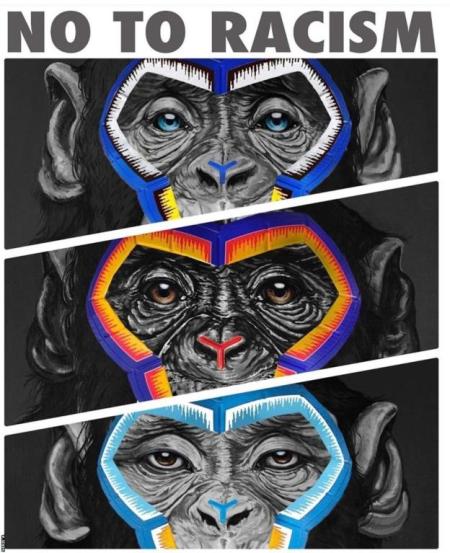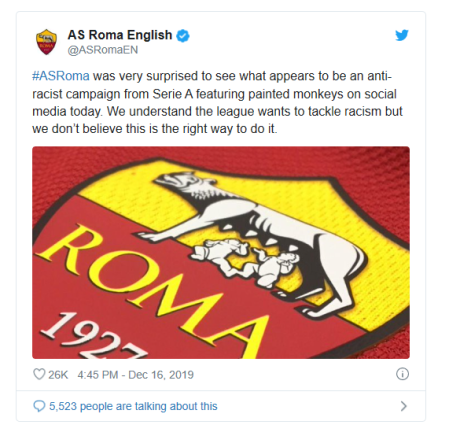What began as a petition on Organise (a workplace platform) in 2018 eventually resulted in the March 4, 2019 resignation of Ted Baker CEO Ray Kelvin. Kelvin had been on voluntary leave since December of 2018. The problem was sexual harassment and people feeling uncomfortable in the workplace with forced hugging from the CEO among the complaints. Ted Baker hires Herbert Smith Freehills LLP to investigate the allegations. The investigation continued after the resignation.
Often a CEO or other top executives “resign” or are fired as a symbolic action to reassure everyone that the situation is fine. But such symbolic resignations dodge the potential source of the problem and seek to escape organizational accountability by blaming one or a few bad apples that have been removed. In other words, the problem is the person and not the system. The are times when that really is the case. One or a few people exploit an organization for their own gain. Other times the system is what seemed to be the problem. At Ted Baker, employees did not feel HR took their complaints seriously. Ted Baker recognized this systemic failure in the lines: “As a board of directors, we are committed to ensuring that that all employees feel respected and valued. We are determined to learn lessons from what has happened and from what our employees have told us and to ensure that, while the many positive and unique aspects of Ted’s culture are maintained, appropriate changes are made.” There is a recognition the system has flaws though falls short of accepting responsibility for the problems (often the case when litigation is pending). The full text of the resignation message is at the end of the post. Ted Baker did not just fire the problem but recognized.
In April, the investigation was concluded but focused only on the HR issues. Here is a summary:
Ted Baker has renewed all training for employees on HR policies and acceptable workplace conduct, and has maintained an independent confidential whistleblowing hotline.
It will also improve the plc board’s oversight on company culture. Sharon Baylay will continue her role as non-executive director for engagement with the workforce.
Later this year, Ted Baker will conduct an employee survey to assess views on the improvements made and gain further suggestions. It has already begun a refresh of its HR policies in line with current best practice
Executive chairman David Bernstein said: “We are determined to learn from this process and, moving forward, cultivate a better environment for all employees. where they always feel respected and valued. We are implementing changes and improvements and are committed to developing best-practice HR policies and procedures that reflect the Ted culture we are looking to develop and enhance in the future.
“One of Ted Baker’s greatest strengths is its people. I would like to thank our team for their co-operation and input during this process and for their continued hard work and commitment. I am confident that this skilled and dedicated team will continue to drive the Ted Baker brand forward.”
The focus is on learning from the failure. The voices of the employees are honored without getting into specifics. Steps are being taken to improve both training and reporting of abuses. There were changes to the system beyond the removal of the CEO. Though it is indirect, Ted Baker does publicly take responsibility for failing the employees and is plotting a course to prevent a repeat of the problems in the future (corrective action). Hence, the company does address its responsibility for the problem to a degree and not just place all the blame with the CEO. It is often the easy way out to use the individual-group dissociation and blame a person instead of the system.
Ted Baker Plc
(“Ted Baker” or the “Group”)
Resignation of Chief Executive Officer
Ted Baker plc announces that Chief Executive Officer Ray Kelvin has resigned with immediate effect.
Mr. Kelvin took a voluntary leave of absence from his role as CEO of Ted Baker in December 2018, after allegations of misconduct were made against him. Since that date an internal Independent Committee has been in the process of investigating those allegations. The Committee commissioned the law firm Herbert Smith Freehills LLP (“HSF”) to investigate the allegations and the company’s policies, procedures and handling of HR-related complaints.
Mr. Kelvin has denied all allegations of misconduct. He has, however, today agreed to resign with immediate effect from his position as Chief Executive Officer and as a director of Ted Baker plc.
Acting Chief Executive Officer Lindsay Page has agreed to continue in this role.
The board has asked David Bernstein to act as Executive Chairman to provide additional support to Lindsay. David has indicated that he will continue in this position until no later than 30th November 2020, by which time a successor will be appointed.
The investigation will continue, with the primary focus of the remainder of the investigation being on Ted Baker’s policies, procedures and handling of complaints. It is expected that HSF will conclude its investigation at the end of Q1 or early in Q2 2019.
Executive Chairman David Bernstein said: “Ray Kelvin founded the business 32 years ago and has, together with the fantastic team around him, been the driving force behind it becoming the global brand it is today. As founder and CEO, we are grateful for his tireless energy and vision. However, in light of the allegations made against him, Ray has decided that it is in the best interests of the company for him to resign so that the business can move forward under new leadership.
As a board of directors, we are committed to ensuring that that all employees feel respected and valued. We are determined to learn lessons from what has happened and from what our employees have told us and to ensure that, while the many positive and unique aspects of Ted’s culture are maintained, appropriate changes are made. Sharon Baylay has agreed to act as the designated non-executive director for engagement with the Ted workforce. Led by Lindsay, we are confident that the strong and experienced team we have in place will build the Ted culture and move the business forward.”
Questions to Consider
- What are the ethical implications of blaming a person or persons instead of recognizing a systemic problem?
- How could Ted Baker have improved its crisis response? Specify why the changes would make the response better?
- Is it a problem that the CEO was not investigated further once he resigned? Why or why not?
4. What issues might arise by including the line about the CEO denying all allegations? How might that affect how employees react to the resignation message









